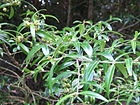Note: This is a project under development. The articles on this wiki are just being initiated and broadly incomplete. You can Help creating new pages.
Difference between revisions of "Buxus wallichiana"
| Line 11: | Line 11: | ||
==Common names== | ==Common names== | ||
| − | {{Common names|sa=|en=|gu=|hi=|kn=|ks=|ml=|mr=|pa=|ta=|te=}} | + | {{Common names|sa=|en=Himalayan Boxwood, Himalayan Box Tree|gu=|hi=Papri, Shamshad|kn=|ks=|ml=|mr=|pa=|ta=|te=}}<ref name="Common names"/> |
==Properties== | ==Properties== | ||
| Line 67: | Line 67: | ||
<ref name="Leaf">[Morphology]</ref> | <ref name="Leaf">[Morphology]</ref> | ||
| + | |||
| + | <ref name="Common names">[https://www.flowersofindia.net/catalog/slides/Himalayan%20Boxwood.html Common names]</ref> | ||
<ref name="How to plant/cultivate">[http://temperate.theferns.info/plant/Buxus+wallichiana Cultivation]</ref> | <ref name="How to plant/cultivate">[http://temperate.theferns.info/plant/Buxus+wallichiana Cultivation]</ref> | ||
Latest revision as of 20:57, 18 August 2020
Buxus wallichiana is a much-branched, evergreen shrub or small tree. It grows up to 4 metres tall. The plant is harvested from the wild for its high quality wood. It is often grown as an ornamental, where it can be trimmed and used as a hedge.
Contents
- 1 Uses
- 2 Parts Used
- 3 Chemical Composition
- 4 Common names
- 5 Properties
- 6 Habit
- 7 Identification
- 8 List of Ayurvedic medicine in which the herb is used
- 9 Where to get the saplings
- 10 Mode of Propagation
- 11 How to plant/cultivate
- 12 Commonly seen growing in areas
- 13 Photo Gallery
- 14 References
- 15 External Links
Uses
Rheumatism, Syphilis, Intestinal worms.
Parts Used
Chemical Composition
Common names
| Language | Common name |
|---|---|
| Kannada | |
| Hindi | Papri, Shamshad |
| Malayalam | |
| Tamil | |
| Telugu | |
| Marathi | |
| Gujarathi | |
| Punjabi | |
| Kashmiri | |
| Sanskrit | |
| English | Himalayan Boxwood, Himalayan Box Tree |
Properties
Reference: Dravya - Substance, Rasa - Taste, Guna - Qualities, Veerya - Potency, Vipaka - Post-digesion effect, Karma - Pharmacological activity, Prabhava - Therepeutics.
Dravya
Rasa
Guna
Veerya
Vipaka
Karma
Prabhava
Habit
Identification
Leaf
| Kind | Shape | Feature |
|---|---|---|
Flower
| Type | Size | Color and composition | Stamen | More information |
|---|---|---|---|---|
| {{{5}}} |
Fruit
| Type | Size | Mass | Appearance | Seeds | More information |
|---|---|---|---|---|---|
Other features
List of Ayurvedic medicine in which the herb is used
Where to get the saplings
Mode of Propagation
How to plant/cultivate
Succeeds in almost any soil that is well-drained.[4]
Commonly seen growing in areas
Steep shady rocky ravines, Often gregarious.
Photo Gallery
References
- ↑ [Chemical constituents]
- ↑ Common names
- ↑ [Morphology]
- ↑ Cultivation
External Links
Categories:
- Ayurvedic Herbs known to be helpful to treat Rheumatism
- Ayurvedic Herbs known to be helpful to treat Syphilis
- Ayurvedic Herbs known to be helpful to treat Intestinal worms
- Herbs with Seeds used in medicine
- Herbs with Leaves used in medicine
- Herbs with common name in Hindi
- Herbs with common name in English
- Habit - Evergreen shrub
- Index of Plants which can be propagated by Seeds
- Index of Plants which can be propagated by Cuttings
- Herbs that are commonly seen in the region of Steep shady rocky ravines
- Herbs that are commonly seen in the region of Often gregarious
- Herbs

